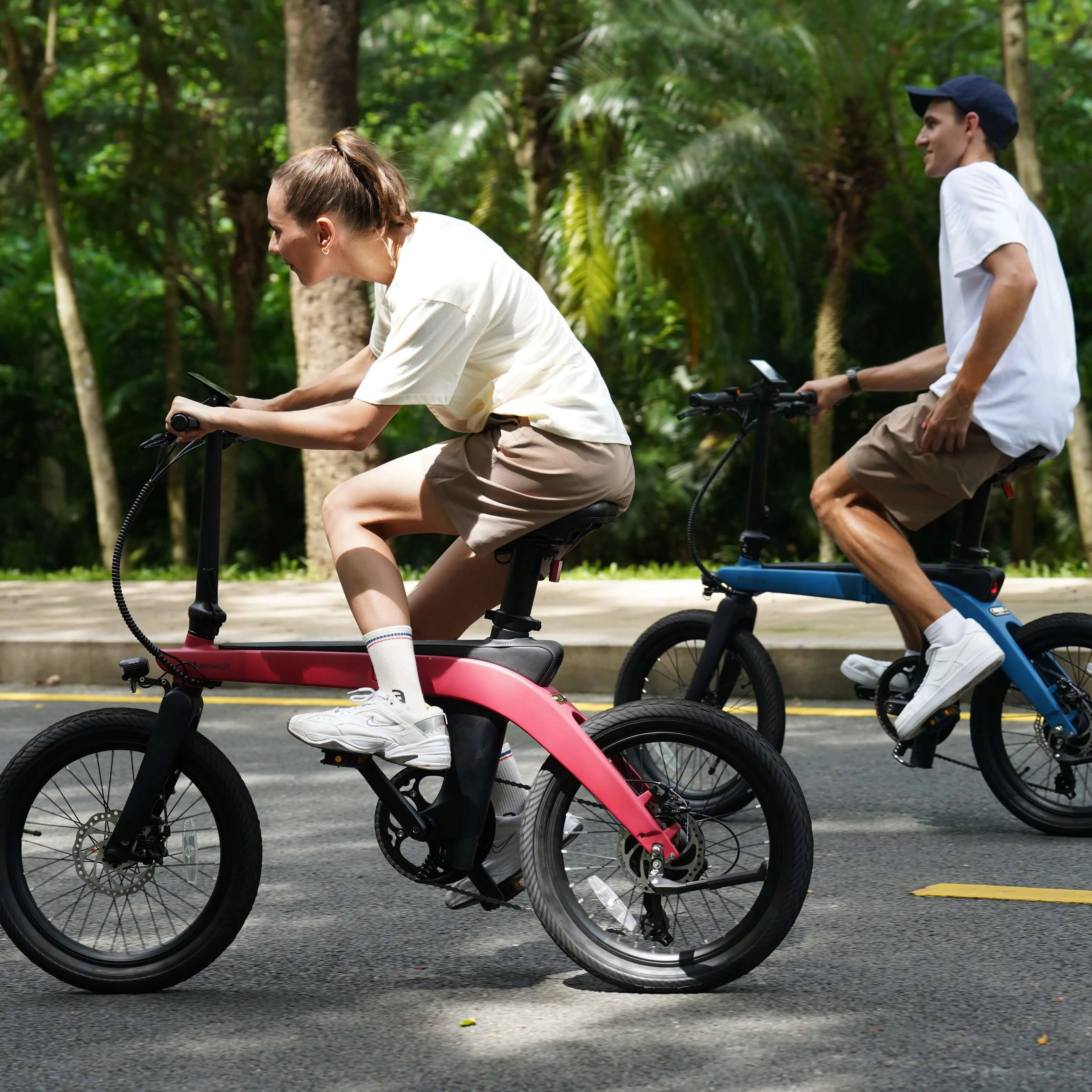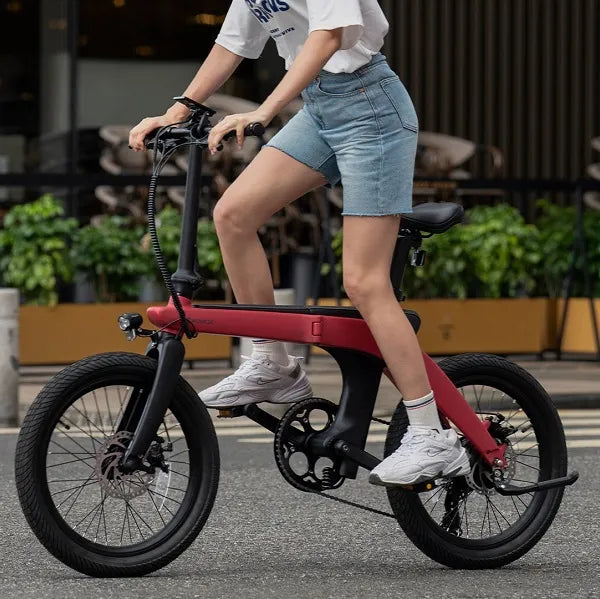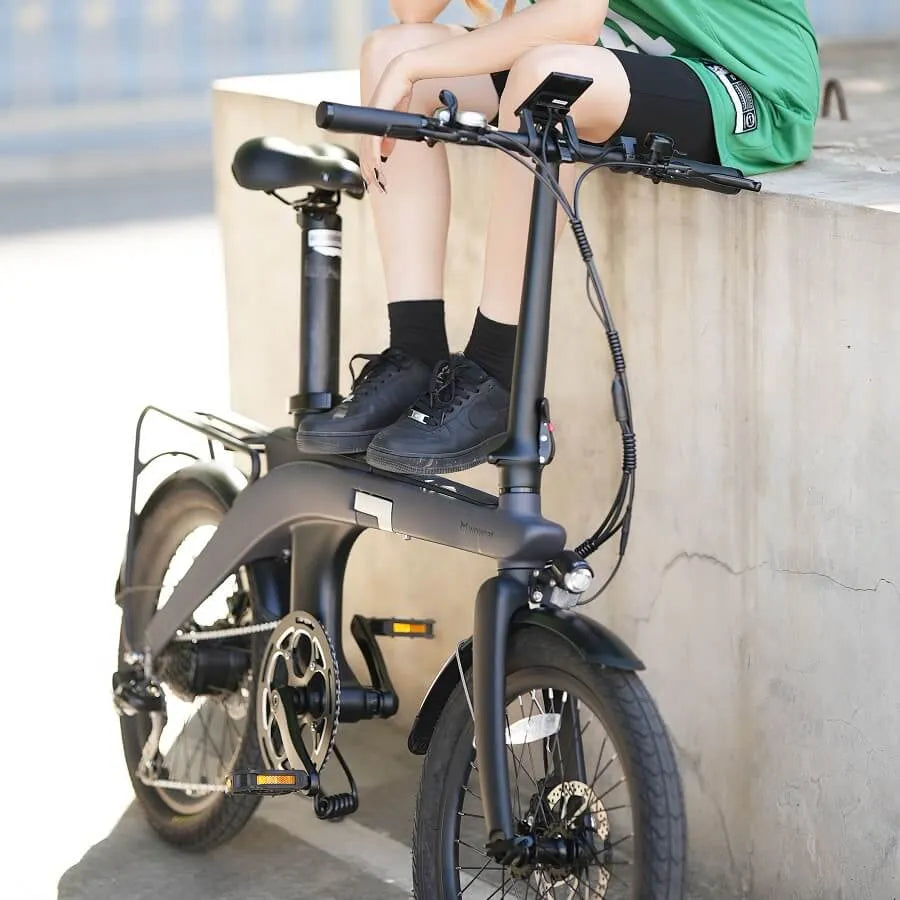E-bikes have gained popularity for their convenience, eco-friendly nature, and social and recreational benefits. By integrating an electric motor, they enhance cycling accessibility, catering to a broader audience, especially those facing challenges with traditional bikes. Electric bicycles have emerged as a favored commuting option due to their compact size, portability, and the avoidance of traffic congestion.
What's your knowledge about e-bikes? This article will introduce e-bike classifications and pertinent laws and regulations, aiming to assist you in selecting the right e-bike.
Know More about E-Bike Classifications
Electric bikes in the United States are commonly categorized into Class 1, Class 2, and Class 3, defining the capabilities and restrictions of these vehicles. The three-class system is currently employed by 36 states across the country as part of their e-bike regulations. These classes, consistent nationwide, aim to provide a standardized framework for local residents to use e-bikes in a regulated manner, particularly on various trails and paths. The following outlines the key characteristics of each class:
Class 1 E-Bike:
Motor Assistance: Provides assistance exclusively when the rider is pedaling.
Maximum Speed: Motor assistance ceases when the bike attains a speed of 20 miles per hour (32 km/h).
Throttle: Lacks a throttle for self-contained motor-only propulsion.
While some bikes feature a handlebar throttle for an additional power boost, on Class 1 e-bikes, the throttle functions only when pedaling simultaneously. However, the throttle significantly aids in effortless pedaling.
Class 1 e-bikes are permitted on bike paths and lanes shared with traditional, non-assisted bikes—commonly referred to as analog bikes.
Examples of Class 1 Ebikes:
7S V4
Class 2 E-Bike:
Motor Assistance: Can be propelled exclusively by the motor without pedaling.
Maximum Speed: Motor assistance ceases when the bike attains a speed of 20 miles per hour (32 km/h).
Throttle: Typically equipped with a throttle for independent motor-only propulsion.
Class 2 e-bikes maintain a maximum speed of 20 mph, and their motors operate even without pedaling. Most Class 2 e-bikes provide both a throttle and electric assist pedal. Similar to Class 1 e-bikes, they are generally permitted in the same areas as traditional analog bikes.
Examples of Class 2 E-bikes:
Aventon Soltera.2 Ebike
Class 3 E-Bike:
Motor Assistance: Offers assistance exclusively when the rider is pedaling.
Maximum Speed: Motor assistance ceases when the bike reaches 28 miles per hour (45 km/h).
Throttle: Lacks a throttle for independent motor-only propulsion.
Class 3 e-bikes are required to have a speedometer, but the presence of a throttle depends on local laws and regulations. In most states, you can ride a Class 3 e-bike in road lanes or a designated bike-only lane on the road shoulder (referred to as curb-to-curb).
Examples of Class 3 E-bikes:
Turbo Tero X 4.0
Know More about E-Bike Laws
Riders should be mindful of their e-bike's specific classification and comply with local regulations. Different areas may have varying rules, potentially restricting certain classes of e-bikes on specific trails or paths. Moreover, helmet mandates and age restrictions may differ depending on the e-bike class. It is essential to consistently check and adhere to local laws and regulations to guarantee the safe and lawful utilization of electric bikes.
E-Bike Law Requirements in the US
As of January 2023, electric bike (e-bike) regulations in the United States are primarily governed by federal law, with additional regulations at the state and local levels. Note that regulations may have changed, so it's crucial to verify the latest information.
Federal Law (Consumer Product Safety Act):
E-bikes meeting specific criteria are considered consumer products, not motor vehicles, under federal law. The Consumer Product Safety Commission (CPSC) defines a three-class system for e-bikes, aligning with the previously mentioned Class 1, 2, and 3 distinctions.
Classifications:
- Class 1 e-bikes are generally allowed where traditional bicycles are permitted.
- Class 2 e-bikes may face more restrictions, particularly in areas where throttle control is a factor.
- Class 3 e-bikes might be restricted in certain areas due to their higher assisted speed.
State Regulations:
States can have additional regulations or modify federal classifications. Some may adopt the federal system, while others have their own rules. States may regulate helmet use, age requirements, and permissible operating areas for e-bikes.
Local Regulations:
Cities and municipalities may impose their own regulations on e-bikes, determining where they can be ridden (e.g., bike paths, roads) and any additional safety requirements
Age Restrictions:
Certain states may enforce age restrictions for riding specific classes of e-bikes.
Helmet Requirements:
Helmet requirements can vary by state and, in some cases, by the e-bike class.
Maximum Speed Limits:
Certain states may specify speed limits for e-bikes, especially for Class 3 e-bikes.
Trail Access:
Access to specific trails, especially those in national parks and public lands, may be restricted based on e-bike class.
Enforcement:
Local law enforcement typically enforces e-bike regulations, and penalties for non-compliance can vary.
Always check with your state and local transportation departments or relevant authorities for the most current and accurate information on e-bike regulations. Laws may change, and local variations may exist, so staying informed is essential.
E-Bike Law Requirements in the CA
As of January 2023, California has specific regulations regarding electric bikes (e-bikes), and these regulations align with the federal classification system (Class 1, Class 2, and Class 3). However, keep in mind that laws can change, and it's advisable to check with official sources or legal professionals for the most up-to-date information. Here are some key points regarding California's e-bike laws:
E-Bike Classes:
California follows the three-class system established by the Consumer Product Safety Commission (CPSC):
Class 1: E-bikes that are pedal-assist only, with no throttle, and that stop providing assistance when the bike reaches 20 mph.
Class 2: E-bikes that can be propelled exclusively by the motor, but that ceases assistance when the bike reaches 20 mph. They may also have a throttle that can be used to propel the bike without pedaling.
Class 3: E-bikes that are pedal-assist only, with no throttle, and that stops providing assistance when the bike reaches 28 mph.
Age Restrictions:
Riders under 16 years old are required to wear a helmet when operating a Class 3 e-bike. Helmets are recommended for all e-bike riders.
Helmet Requirements:
California law requires helmet use for riders under 18 years old, and this includes e-bike riders.
Maximum Speed Limits:
E-bikes are not allowed to exceed the speed limits established for their respective classes.
Bike Paths and Trails:
Class 1 and Class 2 e-bikes are generally allowed on bike paths and multi-use paths unless local ordinances specify otherwise.
Class 3 e-bikes may be restricted from certain paths or trails, so it's essential to check local regulations.
Local Regulations:
Local ordinances may impose additional restrictions or rules for e-bikes, so it's important to be aware of and comply with local laws.
Always verify the latest regulations with official sources, such as the California Department of Motor Vehicles (DMV) or other relevant state agencies, as laws may have changed since my last update.

Tips for e-bike riders
E-bike riders can enhance their riding experience and promote safety by following a few tips. Whether you're a beginner or an experienced cyclist transitioning to an electric bike, consider the following suggestions:
Understand Local Laws:
Be familiar with and adhere to local e-bike regulations and traffic laws. Regulations can vary by region, so know the specific rules applicable to your area.
Choose the Right Class:
Select an e-bike class that aligns with your intended use and local regulations. Class 1 e-bikes are suitable for bike paths and trails, while Class 3 e-bikes may have more restrictions.
Helmet Use:
Always wear a helmet, regardless of local regulations. It's a crucial safety precaution that can protect you in the event of a fall or collision.
Be Visible:
Use lights, reflectors, and bright clothing to enhance your visibility, especially when riding in low-light conditions or at night.
Learn How to Operate Your E-Bike:
Take the time to understand the features and controls of your e-bike. This includes familiarizing yourself with the different assist levels, braking system, and any additional features.
Practice Safe Riding Habits:
Follow standard cycling safety practices, such as signaling turns, obeying traffic signals, and using hand signals to communicate with other road users.
Maintain a Safe Speed:
Respect speed limits and adjust your speed according to the conditions of the road or trail. Be aware that your e-bike may have different speed limits based on its class.
Brake Safely:
Get accustomed to the braking system on your e-bike. Use both brakes evenly, and practice braking smoothly to avoid sudden stops.
Keep Your E-Bike in Good Condition:
Regularly inspect your e-bike for maintenance issues, such as tire pressure, brake function, and the overall condition of the bike. Keep the battery charged for optimal performance.
Use Bike Lanes and Paths When Possible:
Stick to designated bike lanes and paths when available to ensure your safety and the safety of other road users.
Be Mindful of Pedestrians:
Pay attention to pedestrians on shared paths and be prepared to slow down or stop when approaching walkers or joggers.
Secure Your E-Bike:
Invest in a quality lock to secure your e-bike when parked. E-bikes can be attractive targets for theft, so take measures to protect your investment.
By following these tips, e-bike riders can enhance their safety on the road, promote positive interactions with other road users, and contribute to a more enjoyable and responsible cycling experience.
Choose the Right Classification of E-bike for Your Needs
There are many different types of electric bikes, how do you choose the right one for you? The first step in choosing an e-bike class is to determine your needs.
If you want to explore nature trails, more places allow Class 1 e-bikes. If you want to drift along a bike path without pedaling too hard, a Class 2 e-bike with throttle assist can help. If you want to get to and from work as fast as possible, a Class 3 bike will help you.
Here are the advantages and disadvantages of Class 1, 2, and 3 e-bikes
Pros and Cons of Class 1 e-bikes:
Pros:
Greater acceptance. You can ride a Class 1 e-bike on bike paths, trails and even sidewalks (although there are exceptions)
More efficient motors. The assisted pedal mode puts less strain on the battery and the e-bike can go farther on a single charge.
There is no age requirement for riders.
Cons:
Put in more effort. You have to pedal. If you're looking for a bike that can do most of the work when going uphill, a Level 1 e-bike may not be for you.
Lower assist speeds. Once you reach 20 mph, a Level 1 e-bike will no longer provide you with assistance. If you need assistance beyond that, you'll need to get a Level 3.
Pros and Cons of Class 2 E-Bikes
Pros:
Less effort. If you're tired or want to enjoy the scenery, a Class 2 e-bike can do most of the work when you need it.
There is no age requirement for riders.
Cons:
Easier to lose focus. If your legs aren't involved in pedaling, it's easy to lose focus while riding, which can increase the risk of an accident.
Less efficient. It can be tempting to use the throttle function for long periods of time, but the more you use it, the faster the battery will drain.
Pros and Cons of Class 3 E-Bikes
Pros:
They're fast. Class 3 e-bikes help you travel faster than Class 1 and Class 2 bikes, so you can ride through town quickly.
Great for commuting. Class 3 e-bikes allow you to work more efficiently than other classes.
Reduce confusing bicycle regulations. Most states require Class 3 e-bikes to stay on motorized roads and trails.
Cons:
Considered a motorized vehicle. Don't expect to ride your Class 3 e-bike on any natural mountain bike trails.
More expensive. Class 3 e-bikes typically cost more than class 1 or 2 bikes.
More Dangerous. Class 3 e-bikes have a higher top speed, which means falls can cause more damage.














